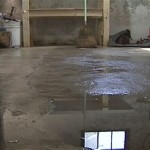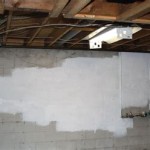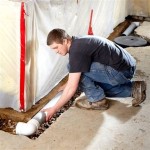How Often Should a Basement Sump Pump Run?
Determining the appropriate frequency of a sump pump's operation is crucial for maintaining a dry and structurally sound basement. The run frequency, however, is not a fixed parameter. It varies significantly based on various factors related to local hydrogeology, weather patterns, the effectiveness of the home's drainage system, and the pump's own capacity. Understanding these variables is key to interpreting whether a sump pump is operating normally or indicating a potential problem.
A sump pump's primary function is to remove water accumulating in a sump pit, typically situated at the lowest point in a basement. This water originates from several sources: groundwater seeping through the foundation walls, surface water run-off infiltrating through cracks or porous materials, and water redirected by subsurface drainage systems like French drains. The pump activates when the water level in the pit rises to a pre-set level, usually determined by a float switch. The pump then expels the water away from the foundation, preventing basement flooding and related water damage.
The frequency with which a sump pump runs provides insights into the efficiency of the foundation drainage system, the prevalence of groundwater in the surrounding soil, and the overall burden placed on the pump. A pump that runs excessively may indicate a saturated soil profile, a malfunctioning drainage system, or an undersized pump struggling to keep up with the incoming water. Conversely, a pump that rarely activates could suggest an effective drainage system, low groundwater levels, or a potential blockage within the system.
Understanding Influential Factors
Several key factors determine how often a sump pump should run. These factors can be categorized into environmental, structural, and mechanical influences, each contributing uniquely to the overall water load the pump must manage.
Environmental Factors: Rainfall is a primary driver of sump pump activity. During periods of heavy or prolonged rainfall, the ground becomes saturated, increasing the hydrostatic pressure around the foundation. This pressure forces water through any available cracks or porous materials, leading to increased water accumulation in the sump pit. Similarly, snowmelt in the spring can saturate the ground and cause a surge in sump pump activity. Geographic location also plays a significant role. Areas with high water tables, proximity to rivers or lakes, or naturally impermeable soils tend to experience higher groundwater levels, resulting in more frequent sump pump operation. Seasonal variations are also critical. Sump pumps typically run more frequently during wet seasons and less frequently during dry seasons.
Structural Factors: The integrity and design of the foundation significantly impact the amount of water that reaches the sump pit. Cracks, fissures, or poorly sealed joints in the foundation walls and floor provide pathways for water intrusion. The presence of a functioning perimeter drainage system, such as a French drain, is designed to intercept groundwater before it reaches the foundation. A well-designed and properly maintained drainage system reduces the burden on the sump pump. The slope of the surrounding land also plays a role. If the land slopes towards the foundation, surface water runoff is more likely to accumulate near the structure, increasing the risk of water infiltration. Foundation coatings and sealants also contribute to reducing water penetration.
Mechanical Factors: The size and capacity of the sump pump are critical determinants of its run frequency. An undersized pump may run constantly in an attempt to keep up with the inflow of water, potentially leading to premature failure. Conversely, an oversized pump may cycle too quickly, resulting in inefficient energy consumption. The float switch's sensitivity also influences the pump's activation threshold. A misadjusted or malfunctioning float switch can cause the pump to run unnecessarily or fail to activate when needed. The pump's discharge line also affects its performance. A clogged or improperly sized discharge line can restrict water flow, forcing the pump to work harder and run longer. The age and condition of the pump itself also impact its efficiency. Older pumps may lose capacity and require more frequent operation to achieve the same level of water removal.
Identifying Normal vs. Problematic Run Frequency
Establishing a baseline for normal sump pump operation is essential for identifying potential problems. This baseline should be based on observation over a period of time, considering seasonal variations and typical weather patterns. A pump that runs for a few minutes every hour during a heavy rainstorm might be considered normal, whereas the same frequency during a dry period could indicate a problem.
Indicators of Normal Operation: The pump activates only after periods of rainfall or snowmelt. The pump cycles on and off at regular intervals, without excessive noise or vibration. The water level in the sump pit decreases noticeably after the pump activates. The discharge water is clear and free of sediment, suggesting the pump is effectively removing water without clogging. The pump remains relatively quiet during operation, indicating normal motor function.
Indicators of Problematic Operation: The pump runs constantly, even during dry weather. The pump cycles on and off rapidly (short cycling). The pump makes unusual noises, such as grinding or rattling. The water level in the sump pit remains consistently high, even after the pump has been running. The discharge water contains sediment or debris. There are signs of water damage in the basement, such as dampness or mold growth. The pump fails to activate when the water level in the pit rises. The pump runs excessively long periods without a noticeable decrease in the water level.
Troubleshooting Excessive Sump Pump Activity
When a sump pump runs more frequently than expected, a systematic troubleshooting approach is necessary to identify the underlying cause and implement appropriate solutions. This involves inspecting the pump, the drainage system, and the surrounding environment.
Pump Inspection: Check the float switch for proper operation. Ensure it moves freely and activates the pump correctly. Clean the sump pit to remove any debris that could be interfering with the float switch. Inspect the pump for signs of damage or wear, such as cracks, leaks, or corrosion. Verify that the pump is properly sized for the sump pit and the expected water inflow. Test the pump's discharge capacity to ensure it is operating at its rated flow rate.
Drainage System Inspection: Examine the perimeter drainage system (if present) for clogs or blockages. Ensure that downspouts are properly diverting water away from the foundation. Check for any signs of surface water runoff accumulating near the foundation. If possible, inspect the soil around the foundation for excessive saturation. Evaluate the effectiveness of any existing foundation coatings or sealants. Consider the possibility of hidden leaks or plumbing problems contributing to the water load.
Environmental Assessment: Monitor rainfall patterns and groundwater levels in the area. Assess the slope of the surrounding land and its impact on surface water runoff. Identify any potential sources of water intrusion, such as nearby bodies of water or underground springs. Consider the possibility of seasonal variations in groundwater levels affecting sump pump activity. Consult with a local drainage specialist or geotechnical engineer for a comprehensive assessment of the site conditions.
Addressing excessive sump pump activity may involve a combination of solutions, such as repairing foundation cracks, improving drainage systems, replacing an undersized pump, or adjusting the float switch. In some cases, it may be necessary to consult with a professional contractor to address more complex issues. Regular maintenance and monitoring of the sump pump system are essential for preventing water damage and ensuring its long-term reliability.
Maintaining a functional sump pump requires an understanding of its operational frequency, various environmental, mechanical and structural considerations. A proactive approach to identifying and addressing potential issues can prevent costly water damage and ensure a dry, healthy basement environment.

How Often Should A Sump Pump Run Clover Contracting

How Often Should A Sump Pump Run The Basement And Co

How Often Should You Service Your Basement Sump Pump System Packaged Pumps Systems Ltd

How Often Should A Sump Pump Run Stellar Plumbing

Sump Pump Short Cycle And Why You Shouldn T Worry About It Richtech Industries

How Often Should A Sump Pump Run

8 Essential Sump Pump Maintenance Tips Plumbwize

How To Not Flood Your Basement A Guide Sump Pump System Home Inspection Geeks

Why Does My Sump Pump Keep Running Everdry Waterproofing

A Guide To Proper Sump Dump Discharge Basement Defender
Related Posts







